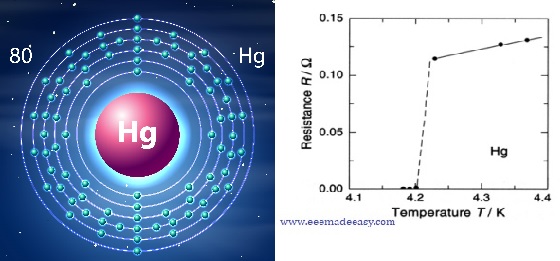What is superconductivity?
Superconductivity is the state of a material in which current can flow with no resistance.
Superconductivity is the property of certain materials to conduct direct current (DC) electricity without energy loss when they are cooled below a critical temperature (referred to as Tc).
What is superconductivity and its properties?
Super Conductivity is the property of complete disappearance of electrical resistance in solids when they are cooled below a characteristic temperature.
This temperature is called transition temperature or critical temperature.
Superconductivity test on Mercury
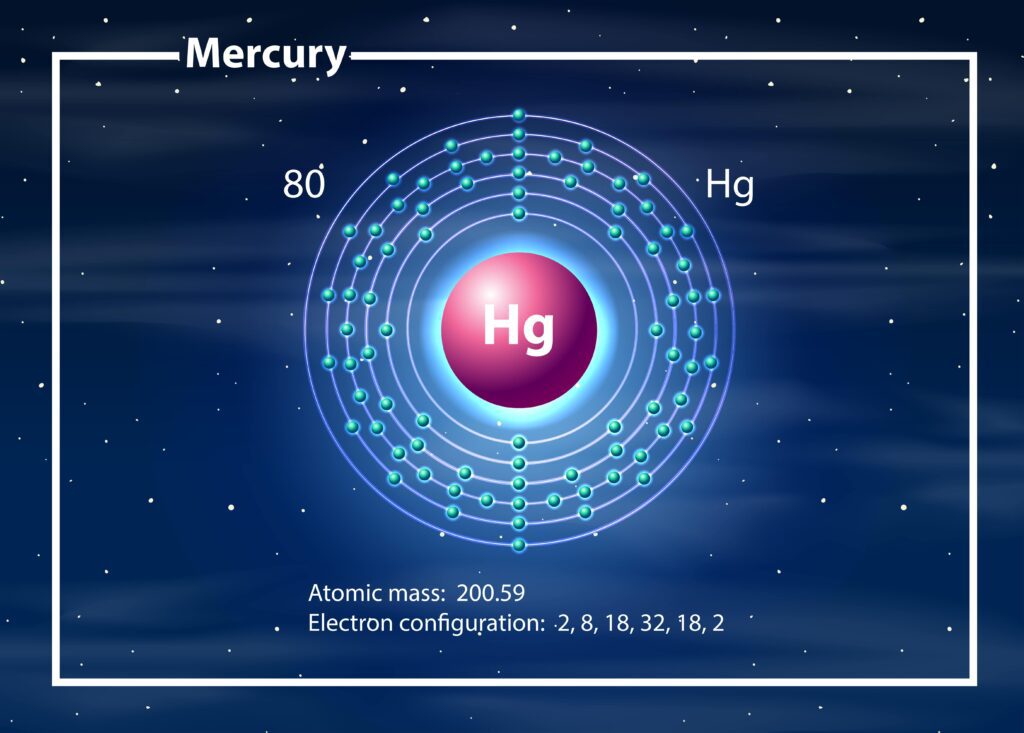
Superconductive state of mercury (TC=4.15 K) was discovered by the Dutch physicist Heike Kamerlingh Onnes in 1911, several years after the discovery of liquid helium.
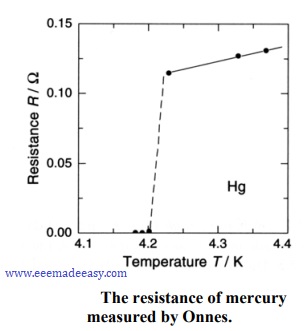
List of crtical temperature of superconductors
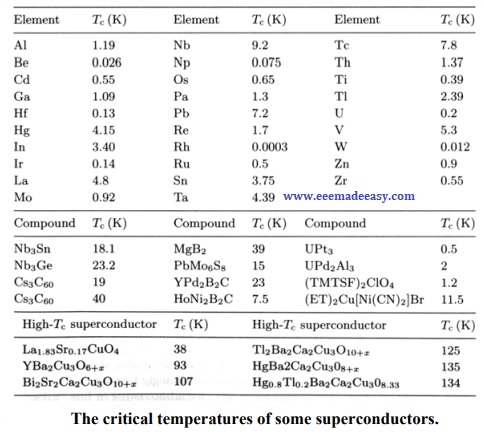
Equation Rt = R[1 + α(t – 20)] holds good for temperature below 20°C.
But at very low temperature, some metals acquire zero electrical resistance and zero magnetic induction ; the property known as superconductivity.
Superconducting elements
Superconducting elements are Zinc, cadmium, mercury, lead.
Typical superconducting compounds and alloys are PbAu, PbTl2, SnSb, CuS, NbN, NbB, ZrC.
Theory of Superconductivity
In a superconductor, when the temperature descends below the critical temperature, electrons find it energetically preferable to form Cooper pairs .
The Cooper pairs interact with the positive ions of the lattice Lattice vibrations are often termed “phonons”; hence the coupling between the electron-pair and the lattice is referred to as
electron-phonon interaction .
The balance between electron-phonon interaction forces and Coulomb (electrostatic) forces determines if a given material is superconducting.
What are the types of superconductivity?
Type I and II superconductors
Type I superconductors are characterized by the Meissner effect, i.e. flux is fully expulsed through the existence of supercurrents over a distance λL.
Type II superconductors find it energetically favorable to allow flux to enter via normal zones of fixed flux quanta: “fluxoids” or vortices.
Examples of Superconductors
Many elements are superconducting at sufficiently low temperatures.
None of the pure elements are useful for applications involving transport current, i.e. they do not allow flux penetration.
Superconductors for transport applications are characterized by alloy/composite materials with κ>>1
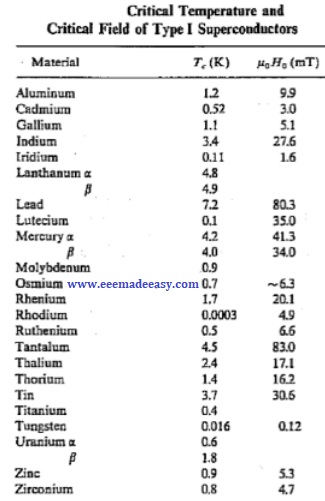
What are two applications of superconductivity?
uses for type I superconductors
Although type I superconductors cannot serve for large-scale transport current
applications, they can be used for a variety of applications.
Excellent electromagnetic shielding for sensitive sensors (e.g. lead can shield a sensor
from external EM noise at liquid He temperatures
Niobium can be deposited on a wafer using lithography techniques to develop ultrasensitive sensors, e.g. transition-edge sensors
superconductivity will disappear
The superconductivity will disappear if
(i) The temperature of the material is raised above its critical temperature,
Or
(ii) a sufficiently strong magnetic field or current density is employed.
Meissner Effect
When a superconductor makes the transition from the normal to the superconducting state, it actively excludes magnetic fields from its interior. This is is known as Meissner effect.
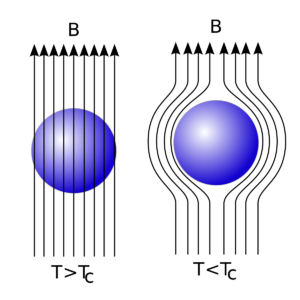
This is done by setting up electric currents near the material surface. The magnetic field of these surface currents cancels the applied magnetic field within the bulk of the superconductor.
What is the study of superconductivity?
What are the advantages of superconductivity?
Best Books for KSEB AE Exam
- Assistant Engineer Electrical KSEB Books list
- Question Bank In Electrical Engineering (Fully Solve With Explanations)
- Kerala PSC OBJECTIVE ELECTRICAL ENGINEERING
- PSC PREVIOUS QUESTION AND ANSWERS IN ELECTRICAL / ELECTRONICS ENGINEERING
- Best Books for Assistant Professor in Electrical and Electronics Engineering|Best Books for Kerala PSC Assistant Professor Electrical Engineering
- Electricity Act 2003 Section 135
- Synchronous Motor Advantages, Disadvantages & Applications
- [Latest]Assistant Director industries and commerce Kerala PSC syllabus|630/2023 syllabus
- Basic Electrical Engineering Quiz | Cells and Batteries Quiz
- [PDF]RRB Technician Syllabus 2024| Exam Pattern RRB Technician
- Measurement of High Resistance
- HVDC vs HVAC |Comparison of HVAC and HVDC
